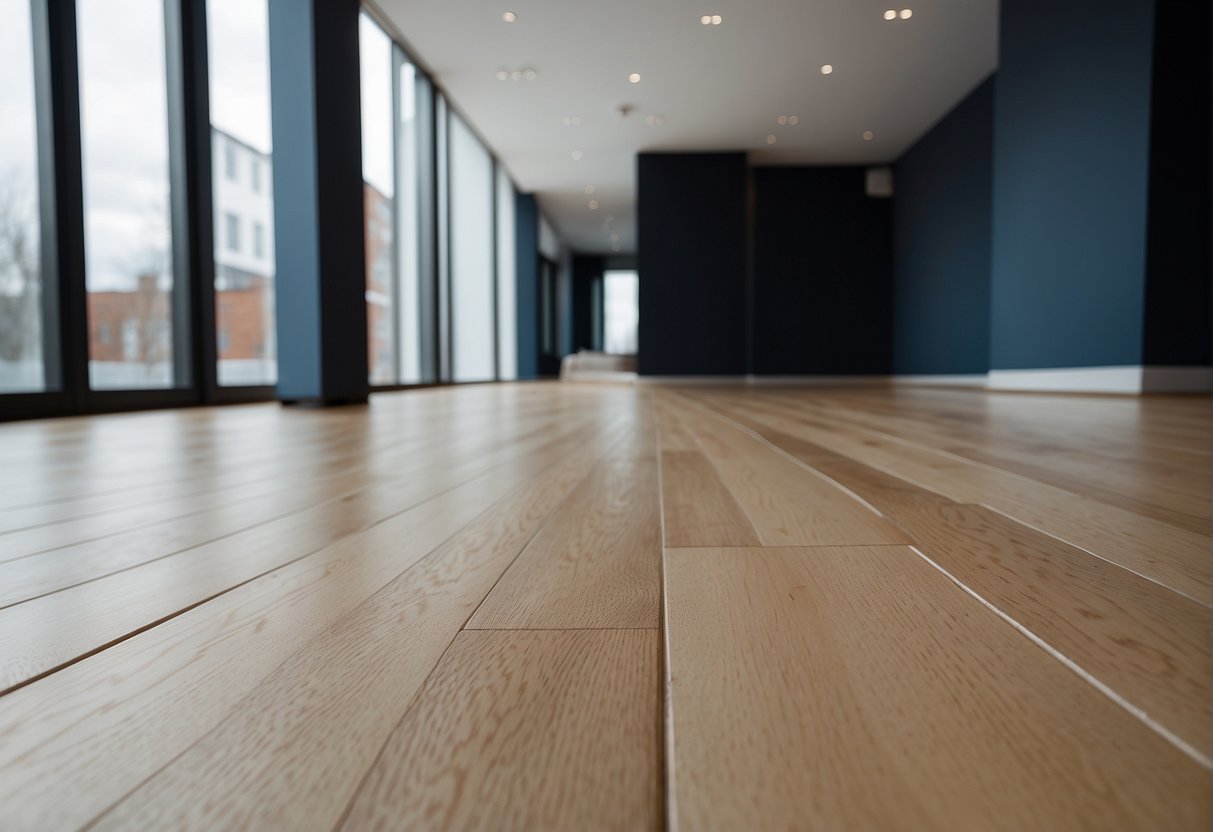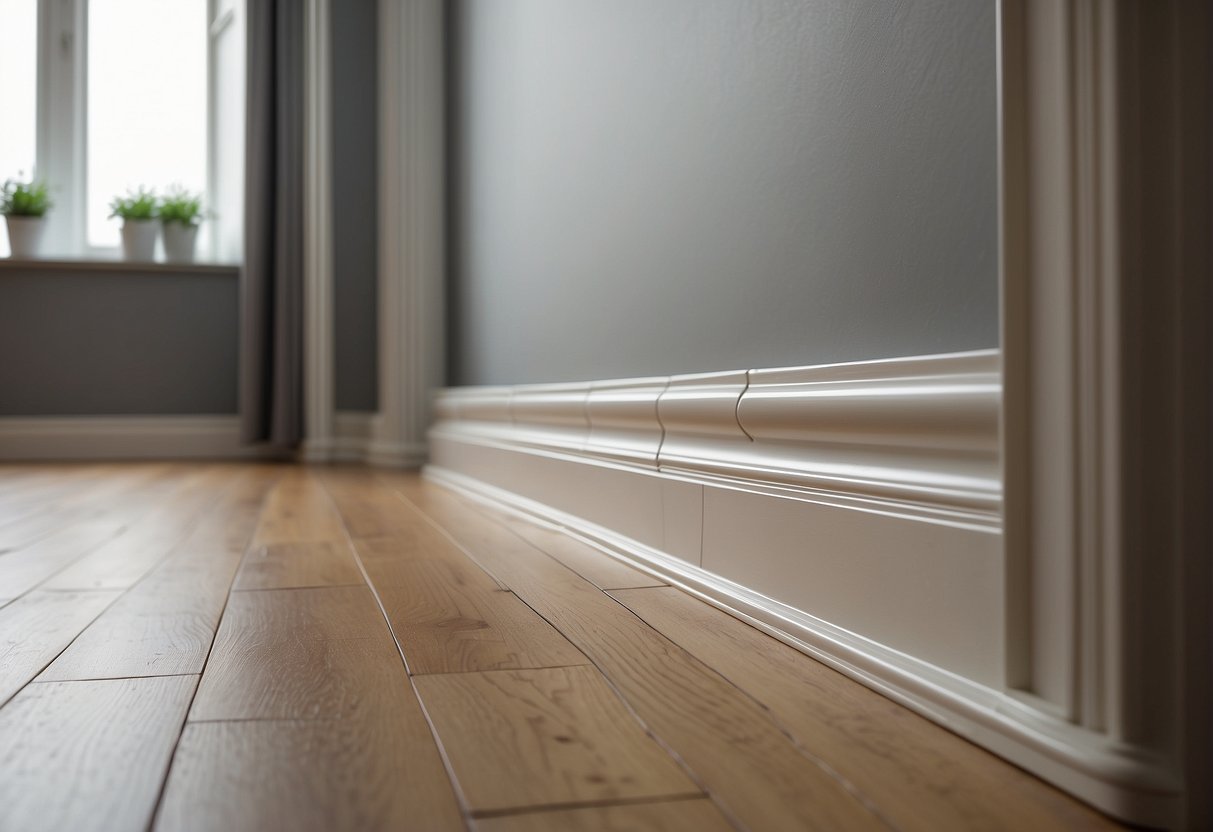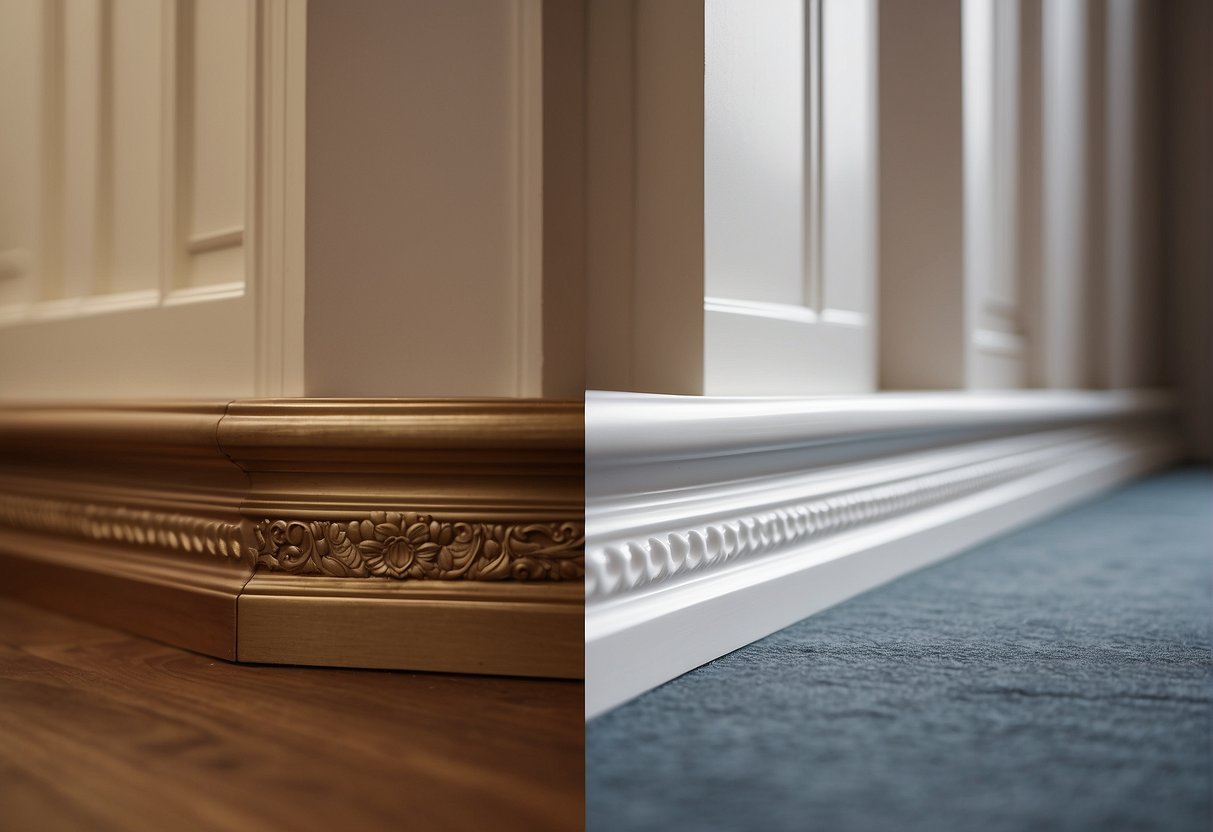Modern vs Traditional Skirting Board Which One to Choose?
How often do we take a look at someon else's shoes? The same can be said about skirting board, but they are essential to completing the final look. Skirting boards are a common understated feature, but are an essential part of interior design as they serve both a functional and aesthetic purpose by hiding the gap between the wall and the floor, protecting the walls from damage and adding character to your space. Skirting boards come in various styles and profiles, with modern and traditional designs being the most popular.

Modern skirting board profiles are characterized by clean lines, simple angles, and minimal embellishments. These profiles are often associated with contemporary and minimalist interior design styles, where less is more. On the other hand, traditional skirting board profiles feature intricate details, ornate patterns, and decorative elements that add a touch of elegance and sophistication to your space.
When it comes to choosing between modern and traditional skirting board profiles, it ultimately comes down to personal preference and the overall design aesthetic of your home. However, it's essential to consider factors such as the age and style of your property, the height of your ceilings, and the type of flooring you have. By carefully selecting the right skirting board profile, you can enhance the overall look and feel of your space and create a cohesive design scheme that reflects your style and personality.
Key Takeaways
- Skirting boards are an essential part of interior design that serve both a functional and aesthetic purpose.
- Modern skirting board profiles are characterized by clean lines and minimal embellishments, while traditional profiles feature ornate patterns and decorative elements.
- When choosing between modern and traditional skirting board profiles, it's essential to consider factors such as the age and style of your property, the height of your ceilings, and the type of flooring you have.
Understanding Skirting Boards

Skirting boards are a decorative feature that runs along the bottom of walls, covering the joint between the wall and the floor. Skirting can come in a variety of styles, sizes, and materials, and can be either modern or traditional in design.
Purpose and Functionality
The primary function of skirting boards is to protect the bottom of the walls from damage caused by furniture, vacuum cleaners, and other objects. They also serve to cover the gap between the wall and the floor, which can be unsightly and difficult to clean. In addition, skirting boards provide an attractive finishing touch to a room, enhancing its overall appearance.
Skirting boards can be made from a range of materials, including hardwood, softwood and MDF. Wood is a popular choice for traditional skirting boards, while MDF is more commonly used for modern designs. The size and style of skirting board you choose will depend on the look you are trying to achieve and the overall style of your home.
Historical Evolution
Skirting boards have been used in homes for centuries, dating back to the Georgian era. In the past, they were often highly decorative and ornate, featuring intricate carvings and mouldings. However, as homes became more modern in design, skirting boards evolved to become simpler and more streamlined.
Today, skirting boards come in a wide range of styles, from traditional to modern. Traditional designs often feature intricate detailing and are made from wood, while modern designs tend to be simpler and more minimalist in appearance. Modern skirting boards are often made from MDF, as it is more affordable and easier to install than traditional wood skirting boards.
In addition to their aesthetic appeal, skirting boards also serve an important functional purpose. They protect the bottom of walls from damage caused by furniture and other objects, and help to keep dust and dirt from accumulating in the gap between the wall and the floor.
Modern Skirting Board Profiles

The overall aesthetic of your home will greatly impact the options of skirting board profiles you may wish to choose from. Modern skirting board profiles are designed to complement the style of modern homes and properties. In this section, we will discuss the characteristics of modern profiles, popular modern materials, and modern installation techniques.
Characteristics of Modern Profiles
Modern skirting board profiles are characterized by their clean and simple lines. They are designed to be minimalistic and unobtrusive, blending seamlessly into the background of your home. This is in contrast to traditional skirting board profiles, which are often ornate and decorative.
Popular modern skirting board profiles include:
- Bullnose
- Chamfered
- Edge
- Stepped
- Square
Popular Modern Materials
MDF skirting boards are a popular choice for modern homes and properties. MDF is a cost-effective and versatile material that can be easily shaped and moulded into a variety of different profiles. It is also easy to paint, meaning that you can customize the colour of your skirting boards to match the rest of your interior design.
Another popular material for modern skirting boards is PVC. PVC skirting boards are lightweight, durable, and easy to clean, making them a practical choice for modern homes.
Modern Installation Techniques
Modern skirting board profiles can be installed using a variety of different techniques. One popular technique is to use adhesive to attach the skirting board directly to the wall. This eliminates the need for nails or screws, creating a clean and seamless finish.
Another popular installation technique is to use a concealed fixing system. This involves attaching the skirting board to a metal track that is fixed to the wall, creating a secure and stable base for the skirting board.
Traditional Skirting Board Profiles

When it comes to skirting board profiles, traditional designs have been popular for centuries. These designs are often associated with period properties such as Victorian, Georgian, and Edwardian homes. Traditional skirting board profiles are known for their elegant and sophisticated appearance, which adds a sense of luxury to any room.
Features of Traditional Profiles
Traditional skirting board profiles typically have a curved or angled shape, with intricate detailing that adds depth and texture to the design. These profiles often feature a combination of rounded and flat edges, with a subtle groove or chamfer running along the top or bottom edge of the board.
Some popular traditional skirting board profiles include:
- Edwardian
- Ogee
- Ovolo
- Torus
- Windsor
Common Traditional Materials
Oak is the most common material used for traditional skirting board profiles. However, pine and MDF are popular choices due to their durability. These materials can be stained or painted to match the decor of the room, and can be finished with a high gloss or matte sheen.
Traditional Design Elements
Traditional skirting board profiles often incorporate other design elements that are commonly found in traditional home decor. These elements include ornate cornices, ceiling roses, and dado rails. These elements work together to create a cohesive look that is both elegant and timeless.
Comparing Profiles and Styles

Aesthetic Impact
When it comes to skirting board profiles and styles, there are two main categories: modern and traditional. Modern skirting boards have sleek, clean lines and are typically made from MDF. They often feature a simple, minimalist design that complements contemporary interior design schemes. On the other hand, traditional skirting boards tend to have more intricate designs and are often made from wood. They can add a touch of elegance and luxury to a room, and are a popular choice for period properties.
The style of skirting board you choose can have a significant impact on the overall aesthetic of a room. Modern skirting boards are ideal for creating a clean, streamlined look, while traditional skirting boards can add character and charm. Ultimately, the choice between modern and traditional skirting boards comes down to personal preference and the style of your home.
Practical Considerations
When choosing skirting boards, it's important to consider practical factors such as durability, maintenance, and ease of installation. Modern skirting boards are often made from materials that are easy to clean and maintain, such as MDF, which is typically lightweight and easy to install, making them a popular choice for DIY enthusiasts.
Traditional skirting boards, on the other hand, are often made from wood, which can be more difficult to maintain and may require regular painting or staining. However, they are often more durable than modern skirting boards and can last for many years with proper care.
Influence on Property Value
The choice of skirting board can also have an impact on the value of your property. Traditional skirting boards are often seen as a sign of quality and craftsmanship, and can add value to period properties. However, modern skirting boards are often more affordable and can be a good choice for those on a budget.
When choosing skirting boards, it's important to consider the overall design and style of your home, as well as your budget and personal preferences. Whether you opt for a modern or traditional skirting board, make sure to choose a style and material that will complement your interior design scheme and add value to your property.
Selecting the Right Skirting Board for Your Home
When it comes to selecting the right skirting board for your home, there are several factors to consider. From matching skirting boards with interior design to installation and maintenance tips, it is important to choose the right skirting board that not only looks great but also meets your needs.
Factors to Consider
One of the first things to consider when selecting a skirting board is the material. Skirting boards can be made from a variety of materials, including MDF, hardwood, and softwood. Each material has its own unique properties and price points, so it is important to choose the one that best fits your budget and needs.
Another factor to consider is the height of the skirting board. The height of the skirting board should be in harmony with the dimensions of the room and ceiling. As a general rule, you should opt for skirting boards that are roughly 1/18 of the height of your room or choose skirting boards that are as tall as roughly double the width of your door architraves.
Matching Skirting Boards with Interior Design
Matching your skirting boards with your interior design is also important. Traditional skirting board profiles are perfect for period homes, while modern skirting board profiles are ideal for contemporary homes. When choosing a skirting board profile, it is important to consider the overall style of your home and the look you are trying to achieve.
Installation and Maintenance Tips
Finally, when selecting a skirting board, it is important to consider the ease of installation and maintenance. MDF skirting boards are easy to install and maintain, making them a popular choice for many homeowners. Hardwood skirting boards, on the other hand, require more maintenance but are more durable and long-lasting.
In summary, selecting the right skirting board for your home requires careful consideration of several factors, including material, height, style, finish, budget, durability, ease of installation, and maintenance. By taking the time to choose the right skirting board, you can enhance the overall look and feel of your home while also meeting your practical needs.
Frequently Asked Questions

What distinguishes modern skirting boards from traditional ones in terms of design?
Modern skirting boards are characterised by their minimalist design, which often features clean lines and simple shapes. In contrast, traditional skirting boards tend to be more ornate and intricate, with decorative mouldings and complex profiles.
Can you provide examples of skirting board profiles that are considered minimalist and modern?
Some examples of minimalist and modern skirting board profiles include the square edge, chamfered edge, and pencil round profiles. These profiles feature simple, straight lines and a sleek, contemporary look.
What are the defining characteristics of Victorian skirting board profiles?
Victorian skirting board profiles are characterised by their ornate, decorative design. They often feature intricate mouldings, such as scrolls, curves, and floral motifs. The height of Victorian skirting boards is typically higher than that of modern skirting boards.
Which skirting board styles are currently the most popular in the UK?
Some of the most popular skirting board styles in the UK include the Ogee, Torus, and Chamfered profiles. These profiles are versatile, and can be used in both modern and traditional interiors.
What are the typical dimensions for modern skirting board profiles?
Modern skirting board profiles typically range in height from 70mm to 120mm, with a depth of around 15mm. However, the exact dimensions can vary depending on the manufacturer and the specific profile.
Is there a contemporary alternative to traditional skirting boards that is gaining popularity?
Yes, there is a contemporary alternative to traditional skirting boards that is gaining popularity. This alternative is known as shadow gap skirting, and features a small gap between the wall and the floor, rather than a physical skirting board. Shadow gap skirting is a minimalist and modern option that can create a sleek and streamlined look in any interior.

